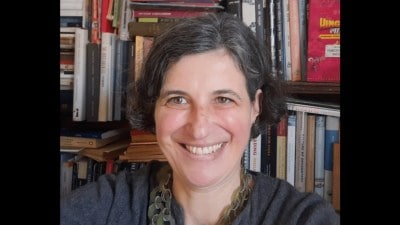Sudden warmth at St Petersburg
The G8 discusses energy security this weekend. Here’s how it could affect temperature readings outside your home

• The world’s most powerful nations are gathering in St Petersburg this weekend for the G8 summit. On the agenda are global energy security, trade and Iran. So why are the greens going blue in the face asking that they come clean on global warming? Wasn’t that the topic of last year at Gleneagles?
Well, the two are so intimately connected that meaningful talk of energy security must take into account the impact on climate change by different sources of energy.
• What’s the connection?
The Earth is warming by the greenhouse effect. When the sun’s rays hit the Earth’s surface, they warm it up and then bounce back as infrared waves. The Earth’s atmosphere, however, traps some of this heat, so it is not completely lost and the Earth plunged to sub-zero temperatures. This trapping is aided by the so-called greenhouse gases, primary ones among them being water vapour and carbon dioxide. Given the more or less stable composition of the atmosphere for all these millennia, the Earth’s surface had maintained an average temperature of 14 degrees Celsius. Trouble is, if the concentration of greenhouses gases in the atmosphere increases, the Earth will trap far more heat than it has been doing so far. This will substantially raise its temperature. There is conclusive evidence that this is actually happening. The New Scientist reports that the 20th Century recorded an average global warming of 0.6 degrees Celsius. Burning fossil fuels is the leading source of increased CO2 in the atmosphere.
• Surely we can handle that?
Not if current trends continue. And they are. To put it very simply consider this statistic from An Inconvenient Truth, Al Gore’s remarkable new book: “If you look at the 21 hottest years measured, 20 have occurred in the past 25 years… the hottest year recorded was 2005.” That is: the hot years are bunched up in the near past.
More clinching proof comes from the famous Keeling curve. In 1958, American climatologist Charles Keeling began assisting his professor, Roger Revelle (who set Gore off on a lifetime of climate change advocacy), in recording daily measurements of carbon dioxide in the atmosphere at Mt Mauna Loa in Hawaii. (See graph.) The concentration keeps going up and down each year because the northern hemisphere has a greater landmass, more people and more vegetation. Tim Flannery in his bestselling book, The Weather Makers, calls the curve a work of beauty, a graphic of the Earth breathing. When it’s springtime in the north, new foliage absorbs carbon dioxide, taking the curve down. When its autumn and winter, decomposition increases carbon dioxide. But each year, this inhalation and exhalation ends at a concentration higher than the previous year’s—indicating the effect of our increasing consumption of fossil fuels.
• What’s the kind of temperature increase we are looking at?
The most credible forecast is by the Intergovernmental Panel on Climate Change, which is supported by the UN and the World Meteorological Organisation. Its last report—in 2001—put the change in global temperature from 1990 to 2100 anywhere between 1.4 and 5.8 degrees Celsius. The next report is due in 2007.
• How scary can that be?
Walk through the slide-by-slide analysis in Gore’s book (he also presents a film by the same name) and here are some of the highlights. Pictorial depictions of glaciers receding in Alaska, the Himalayas, South America and Europe. In 2004, Japan was hit by a record 10 typhoons (previous record: 7). “The science textbooks had to be rewritten in 2004. They used to say, ‘It’s impossible to have hurricanes in the South Atlantic.’ But that year, for the first time ever, a hurricane hit Brazil.” In 2004, the US saw more tornadoes than in any other year. Meltwater pools are increasing in Greenland. Ice shelves are already breaking up in Antarctica. Residents of many low-lying Pacific islands are evacuating their homes because of rising waters. In August 2005, Lucerne waded through knee-deep water. A month earlier, Mumbai got the largest downpour that any city in India had received in a single day.
• Hold on, how could that Mumbai downpour be a result of global warming?
It is, be sure, a speculative link. But consider Gore’s explanation a few pages earlier: “Warmer water increases the moisture content of storms, and warmer air holds more moisture. When storm conditions trigger a downpour, more of it falls in the form of big, one-time rainfalls and snowfalls. Partly as a result, the number of large flood events has increased decade by decade on every continent.” And remember, water vapour too is a greenhouse gas.
• How does this connect with Vladimir Putin’s party in St Petersburg?
G8 is expected to deliberate on expanding the definition of energy security to include cleaner fuel. A shift away from fossil fuel is a must if greenhouse gases are to be kept in check. This can be done by giving monetary and governmental support to new technologies, carbon trading, and imaginative pricing of fossil fuel. Also expect the debate on nuclear energy to heat up.
It already has among the greens. WWF has issued a call for a Marshall Plan on global warming at the G8 summit, but cautions against reliance on nuclear energy. On the other hand, James Lovelock, who first came up with the Gaia Hypothesis in the 1970s, writes in his new book, The Revenge of Gaia, that as a green concerned about the prospect of lethal heatwaves and inundation of coastal habitation, he doesn’t have the luxury of waiting for renewable sources of energy to be developed adequately to take care of our energy needs. Nuclear energy, for him, is the only viable solution.



- 01
- 02
- 03
- 04
- 05




























